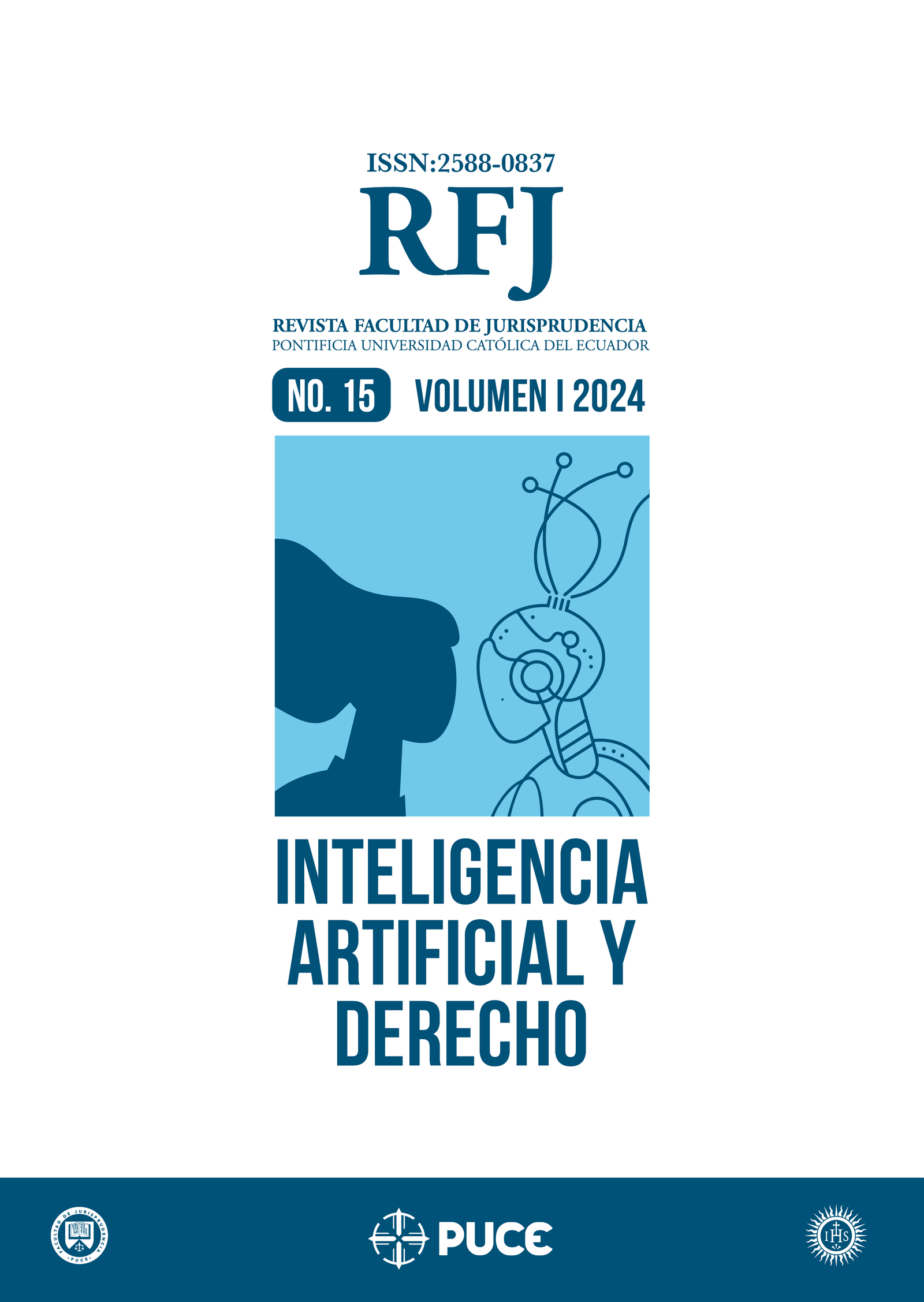Facial Recognition Systems under the European Union's Artificial Intelligence Act
Contenido principal del artículo
Resumen
The human eye can distinguish one person from another by identifying them on their face, physical appearance or other characteristics that make a person unique. Nowadays, technology allows us to make the exact identification by using Facial Recognition Systems (FRS). A computer does not perceive a face but learns a set of data representing various pixels. Consequently, the human eye is improved and replaced, and now this process can be completed automatically using pattern recognition.
In this regard, the European Commission refers to the Artificial Intelligence Act (AIA) as a proposal that promises to establish a general framework with many essential requirements for AI-based systems. Numerous concerns are up in the air, from how to tackle these problems to what courses of action the developers of the systems should take. This research aims to debate the treatment of FRS under the AIA. Consequently, it will analyze the prohibitions of certain Artificial Intelligence practices and the classification of high-risk AI systems that directly impact the use of FRS. Next, the problem of bias will be examined, with specific emphasis on the development stage of an AI system and human oversight is essential to achieve bias mitigation.
The implications of using algorithms daily can either open or close opportunities for people. In that sense, it stands to reason to instruct Artificial Intelligence to be intelligent enough, so it does not discriminate against anyone based on gender, race, religion, sex, or any other factor.
Descargas
Detalles del artículo
Citas
I) Buolamwini, J., Gebru, T. Gender Shades: Intersectional Accuracy Disparities in Commercial Gender Classification. FAT. 2018. Available online: https://www.semanticscholar.org/paper/Gender-Shades:-Intersectional-Accuracy Disparities-Buolamwini-Gebru/18858cc936947fc96b5c06bbe3c6c2faa5614540#citing-papers (05.03.2023).
II) Leslie, D. Understanding bias in facial recognition technologies: an explainer. The Alan Turing Institute. 2020. Available online: https://doi.org/10.5281/zenodo.4050457 (05.03.2023)
III) European Commission. Proposal for a Regulation Laying down Harmonised Rules on Artificial Intelligence (Artificial Intelligence Act); COM. 2021. European Commission: Brussels, Belgium. 2021.
IV) ECHR C-4755/16,Beghal versus The United Kingdom. 2016. Available online: https://hudoc.echr.coe.int/eng/?i=001-166724
V) European Data Protection Board, European Data Protection Supervisor. Joint Opinion 5/2021 on the Proposal for a Regulation of the European Parliament and of the Council laying down harmonised rules on artificial intelligence (Artificial Intelligence Act). 2021. Available online: https://edpb.europa.eu/our-work-tools/our-documents/edpbedps-joint-opinion/edpb-edps-joint-opinion-52021-proposal_en
VI) ECHR 44647/98, Peck versus The United Kingdom.2003. Available online: https://opil.ouplaw.com/display/10.1093/law:ihrl/3168echr03.case.1/law-ihrl-3168echr03
VII) European Parliament's Policy Department for Citizens' Rights and Constitutional Affairs. Biometric Recognition and Behavioural Detection Techniques with a Focus on Their Current and Future Use in Public Spaces. 2021. Available online: https://www.europarl.europa.eu/RegData/etudes/STUD/2021/696968/IPOL_STU(2021)696968_EN.pdf (07.03.2023)
VIII) Regulatory framework proposal on artificial intelligence. Shaping Europe's Digital Future.2022. Available online: https://digital-strategy.ec.europa.eu/en/policies/regulatory-framework-ai
IX) High-Level Expert Group on Artificial Intelligence, Ethics Guidelines for Trustworthy AI, 2019.Available online https://ec.europa.eu/newsroom/dae/document.cfm?doc_id=60419
X) Xenidis, R., Senden, L. EU Non-Discrimination Law in the Era of Artificial Intelligence: Mapping the Challenges of Algorithmic Discrimination. 2019. pp. 151-182., Available at SSRN: https://papers.ssrn.com/sol3/papers.cfm?abstract_id=3529524
XI) Hacker, P. Teaching fairness to artificial intelligence: Existing and novel strategies against algorithmic discrimination under EU law. 2018.
XII) Grother, P. Hanaoka, K. Ngan, Mei. Face Recognition Vendor Test (FRVT) Part 3: Demographic Effects. 2019. Available online: https://nvlpubs.nist.gov/nistpubs/ir/2019/NIST.IR.8280.pdf (08.03.2023)
XIII) European Commission, Commission Staff Working Document Impact Assessment, Accompanying the Proposal for a Regulation Laying down Harmonized Rules on Artificial Intelligence. 2021. Available online: https://education.ec.europa.eu/document/commission-staff-working-document-impact-assessment-summary-european-institute-of-innovation-and-technology-eit (14.03.2023)
XIV) Ebers, M.; Hoch, V.R.S.;Rosenkranz, F.; Ruschemeier, H.; Steinrötter, B. The European Commission's Proposal for an Artificial Intelligence Act—A Critical Assessment by Members of the Robotics and AI Law Society (RAILS). 2021, 4, 589–603. https://doi.org/10.3390/j4040043
XV) Burt, A. How to Fight Discrimination in AI. Harvard Business Review. 2020. https://hbr.org/2020/08/how-to-fight-discrimination-in-ai
XVI) Jain,A. Facial Recognition Laws in Europe. 2021.Available online: https://panoptic.in/case-study/facial-recognition-laws-in-europe (15.02.2023)





